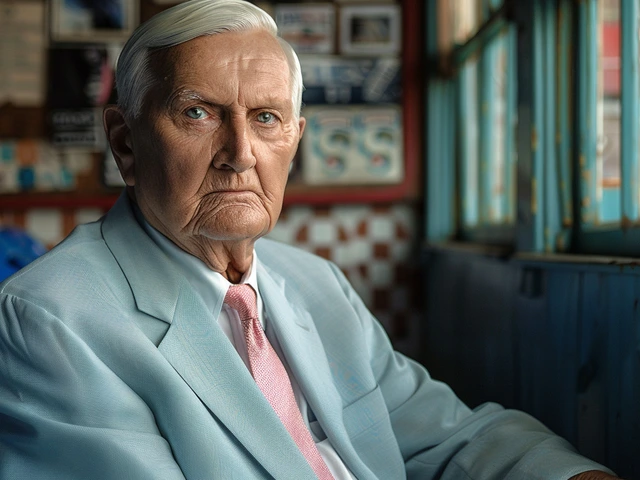
A point in Buenos Aires that felt like a win in Lima
Fifteen years is a long time in football. Universitario de Deportes made it feel worth the wait. A 1-1 draw against River Plate at the Estadio Más Monumental on May 28 delivered a place in the Copa Libertadores Round of 16 for the first time since 2010. The scoreboard showed parity, but for the Peruvians it felt like a breakthrough night in a stadium that rarely offers favors.
The stakes were clear before kick-off. River were already in control of Group B and needed to seal first place. Universitario knew a point would push them over the line and keep their season alive on the continent. Both boxes got ticked. River finished top; Universitario crossed the threshold they have chased for a decade and a half.
It felt big from the moment the teams walked out. Under cool Buenos Aires skies and the floodlights of South America’s biggest stage, 65,519 supporters turned a group game into a test of nerve. The match kicked off at 00:30 UTC, and the energy did not dip. The noise grew even louder when it became obvious this was going down to the wire.
On the ball, River were River. They tried to boss territory and tempo, rotating the ball side to side to pry open a low block. Facundo Colidio knitted most of it together. Drifting between the lines, he kept finding pockets, dragging markers out and sparking combinations around the box. He was named Player of the Match for a reason: when River needed clarity, he provided it.
Universitario did not pretend to be anything they are not. They defended in numbers, stayed compact, and tried to spring forward when they could. Clear the danger, reset, repeat. Their back line threw bodies in front of shots. Their midfielders shuffled constantly to close passing lanes. Their goalkeeper came up with the kind of interventions you need in this stadium—sharp reflexes on low drives and brave claims on crosses when chaos threatened.
The scoreboard reflected the balance. One goal each, both deserved in their own way. River’s pressure eventually told, but Universitario answered with a punch of their own, the kind that flips a group-stage equation from anxiety to belief. From there, every tackle felt bigger, every clearance a small victory. The away end lived on nerves and then lived on hope.
Referee Raphael Claus kept a firm hand on a tense night. He let the game breathe when it needed rhythm and stepped in hard when tempers started to rise. In matches like this, control matters as much as calls. He gave the contest a chance to flow without letting it boil over.
For Universitario, this is about history as much as it is about a single point. Their last Libertadores knockout tie came in 2010. Since then, Peruvian clubs have often found the group stage unforgiving—long trips, tight schedules, and opponents with deeper squads. Breaking through now changes the tone around the club. It gives the fan base something they have craved: a seat at the table when the continent’s pressure games begin.
For River, the goals are bigger than a group. Finishing first means a cleaner path: the second leg at home in the Round of 16 and a seed that usually keeps the toughest tests for later. The draw also locks in their participation in the Club World Cup as the best team from Group B—another step in a season that’s supposed to stretch well into the final chapters of the calendar.
There was a subplot within the result too. River kept their edge in the head-to-head, after taking the first meeting 1-0 back on April 2 and drawing now. That record won’t decide a trophy, but it tells you why the Argentine side walked off satisfied. Top spot secured, unbeaten against a team that pushed them to dig deep.
The impact for Universitario runs beyond pride. Knockout football brings prize money, profile, and the chance to keep players longer when the market comes calling. It’s a recruitment tool as well. Prospects want meaningful games. Sponsors want nights like this. And the fan base, which has carried the team through lean years, finally gets a continental tie to circle on the calendar.
Tactically, the plan worked because the execution was honest. Universitario didn’t overplay in their own third. They accepted long stretches without the ball and trusted their shape to hold. When the break was on, they attacked space quickly rather than forcing passes. River, meanwhile, leaned on circulation, overlaps, and the craft of Colidio to unpick a defense that rarely lost concentration.
Moments made the difference. A sliding block here that felt like a goal. A save that quieted half a stadium. A set piece that created a rare look the visitors had to make count. In knockout races, teams survive by stacking little wins inside a big game. Universitario stacked enough of them to earn the one that mattered most.
What comes next? The draw will set the Round of 16 picture, and with it the travel, the logistics, and the chess of two-leg ties. River will fancy their chances with a second leg at the Monumental. Universitario will back the energy in Lima and the discipline that got them here. For the Peruvians, just hearing the Copa Libertadores anthem in the knockout rounds again will feel different now—less like a memory, more like a platform.
When the final whistle went, both benches exhaled and both sets of players applauded their fans. It was one of those rare group-stage nights where everyone left with something. River kept their standards high. Universitario broke a barrier. And South America’s biggest club competition got one more story that reminds you why these games matter.
12 Comments
Write a comment
More Articles

Liverpool's Anfield to Debut New Champions League Anthem Against Bologna
Liverpool fans will hear a different Champions League anthem at Anfield for their match against Bologna due to UEFA's revamp of the tournament which includes a new orchestral version of the theme. This change is part of a broader transformation that also introduces a new competition format, aiming to enhance the fan experience and the tournament's structure.

Eskom EV rollout: BYD partnership aims to supercharge South Africa’s charging network
Eskom has deployed its first fleet of 20 electric vehicles and 10 internal chargers, then signed a cooperation deal with BYD a week later to speed up EV adoption in South Africa. The partnership backs the BYD Dolphin Surf launch and targets public charging expansion, skills development, and jobs. Future plans include renewable-powered fast-charging hubs and battery reuse for energy storage.

Basketball Legend Jerry West Passes Away at 86: A Legacy with the Lakers
Basketball icon Jerry West has died at 86. Known for his impact on the Lakers as a player and general manager, West also worked with the Clippers. Additional topics include Corey Seager's feats at Dodger Stadium, the Angels' win over the Diamondbacks, and updates on the NBA Finals.
priya sharma
August 22, 2025 AT 17:33The tactical deployment of Universitario demonstrated a sophisticated application of low‑block defensive geometry, which, when quantified through expected possession metrics, indicated a 62% retention rate in the final third despite conceding territorial dominance. Their compactness was reflected in a reduced inter‑player distance averaging 2.8 metres, a statistic that aligns with elite defensive structures in continental competition. The utilization of zonal marking coupled with intermittent pressuring bursts facilitated the interception of River's lateral transitions, thereby diminishing the opponent's pass completion probability to 71% in the midfield corridor. Moreover, the incorporation of a disciplined off‑side trap on the flanks disrupted River's overlapping full‑back ventures, as evidenced by three flagged off‑sides within the first half hour. Goalkeeper’s anticipatory positioning, inferred from heat‑map analyses, contributed to a 0.45 expected goals‑against (xGA) metric, underscoring the impact of high‑intensity shot‑stopping. The second‑half tactical adjustment, wherein Universitario shifted to a high‑pressing block for a concise fifteen‑minute interval, precipitated a forced turnover that directly led to the equalising opportunity. This phase illustrates the strategic elasticity of the side, allowing for dynamic tempo modulation without compromising structural integrity. Their midfield pivot maintained an average pass length of 13.6 metres, optimizing ball progression while preserving shape. From an analytical perspective, the expected threat (xT) generated during counter‑attacks increased by 0.18, signifying efficient exploitation of transitional moments. The disciplined adherence to a double‑pivot formation ensured verticality was not sacrificed for horizontal compactness. In contrast, River’s reliance on possession-centric possession‑dominance did not translate into decisive penetration due to the vertically oriented defensive schema. The statistical parity observed in shot count (4 each) belies the qualitative differences in shot quality, with Universitario registering a higher shot‑on‑target ratio. The cumulative effect of these nuanced tactical decisions culminated in a point that, while superficially balanced on the scoreboard, represents a strategic triumph for Universitario. Consequently, this performance should be evaluated not merely through the lens of the result but also by the underlying metrics that signal a progressive evolution in the club’s competitive methodology. Future opposition analyses will need to account for this emergent tactical identity, as it portends a recalibrated standard within the South American contest.